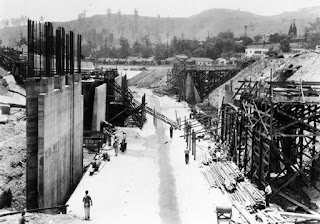(Continued from the preceding post)
(Mars courtesy of Google Images)
Perhaps it was the chalky white and the greens and golds of
the cyanobacteria, their streamers and platelets that reminded me of work going
on far, far away from our little desert project on the western edge of the
Earth’s Great Basin. Could it be that it was in steamy pools such as this that
life got its start on Earth and evolved into the rich, but now increasingly threatened
diversity? In the depths of interplanetary space there are stirrings and
activities that may point toward the possibility of life other than on
Earth.
On places called Titan, Enceladus, and Europa, spacecraft called Cassini and Galileo, infinitely small
in the immensity of the cold solar abyss, supported by increasingly exact work with
Earth and space-based telescopes probe for the possible presence of life-supporting
habitats. Even further out, in December of 2014 NASA, announced that scientists
using the Kepler telescope had discovered worlds circling distant stars that
were very likely to host watery environments and a year earlier than that, in 2013
workers using the Hubble telescope discovered the possibility of water on
distant worlds. We now know that water
is not as rare in the universe as we had once thought. But we don’t even have to
look as far as the moons of the outer planets …closer to home robots Spirit and
Opportunity wander the face of Earth’s sister Mars searching for signs of life in
the now dry lake beds of Endeavour Crater and along the high ridges . On the
saturnian moon Enceladus water is literally blown into space.
Given the immensity of the universe and the hundreds of
millions of suns and their circling planets is it unlikely that life only happened
and evolved on Earth? I think not. In our galaxy alone, the Milky Way, there
are over 100 billion stars and ours is only one of 100 billion galaxies in the
universe. In our galaxy, how many planets
lie in a zone where life is possible, the so-called Goldilocks Zone? The latest
estimate, based primarily on the work with the Kepler telescope, holds that
there are about 8.8 billion planets in The Milky Way where the temperatures are
neither too hot nor too cold for life. With each passing day and each new
discovery it becomes more and more likely that life-sustaining planets, with
suitable conditions exist in the universe, let alone our galaxy. The odds for
life on other worlds are very, very good, almost overwhelming. It is even possible that the signature for
life will be discovered in the ancient muds of the now dry lake beds of Mars. Although
it is increasingly unlikely, with each passing year, that I will live to
witness the discovery that we are not alone, there is even an outside chance
that such a discovery will take place during what remains of my life. However,
after ¾ of a century the machinery of life is becoming frayed around the edges.
But I am sure that someone living today will see the discovery of life somewhere
else in the universe. I am positive of that. Perhaps it will be my grandchildren who were the first volunteers to work with me at the small thermal wetland on the edge of the Great Basin.


(Enceledus courtesy of Google Images)
















.JPG)



